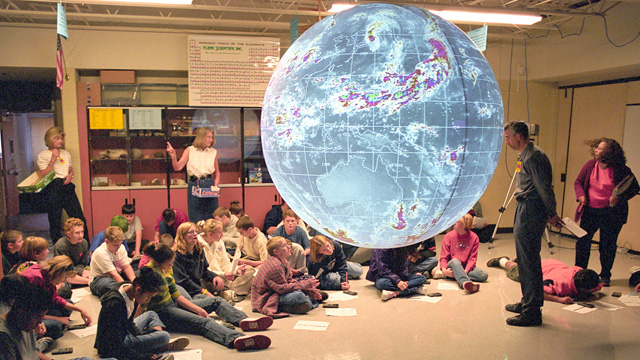Move over, dusty plastic globe, the globe of the future is taking over. According to a Mark Vanhoenacker report at the New York Times, digital globes are becoming better designed and more accessible, bringing limitless educational and entertainment possibilities for places of work, study and play:
Until recently, cost and technical limitations have largely confined these modern spheres to institutional settings like science centers. But as technology improves and prices fall, it’s growing more likely that a digital orb will someday arrive in a classroom or boardroom — even a living room — near you.
Like the old school globes once common in classrooms, digital globes range in size, but unlike the globes of your childhood, the image on a digital globe can be changed with the touch of a button. The new globes are evidently useful in the fields of earth and atmospheric sciences, but they are also being used to teach social sciences in classrooms in China, and could potentially be useful in other fields including data modeling.
The digital globes that are becoming more accessible today use internal projectors. These, however, have some lighting and structural issues, and they aren’t cheap, with prices ranging from about $21,000 to $43,000 for 24 to 32-inch diameter models. “Mike Foody, the C.E.O. of Global Imagination, says that he hopes to have education-discounted prices down to $2,500 within a year or two,” Vanhoenacker explains. “If he succeeds, that would be within the price point of other high-tech classroom equipment, like interactive whiteboards.” For many students, this could translate into greater learning opportunities.
Other opportunities exist as well. Corporations could, for example, use digital globes for “summarizing sales data or market penetration, say, or resource allocation, or the locations of globe-trotting team members.” In the home, the potential of digital globes is limitless. “Think too, of music visualizations, digital aquariums, geotagged vacation photos, real-time flight tracking of your spouse’s trip, [and] Risk-style ‘board’ games.”
(via NYT)
Photo via NOAA
